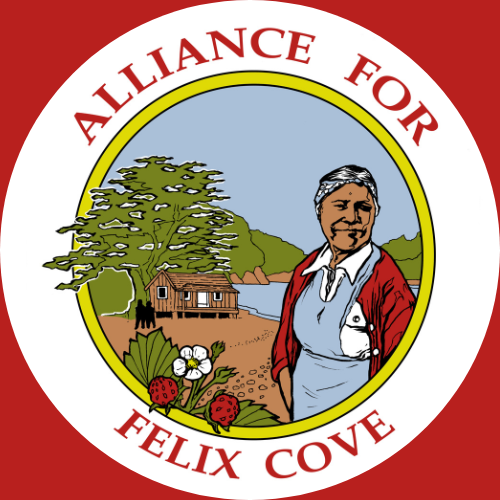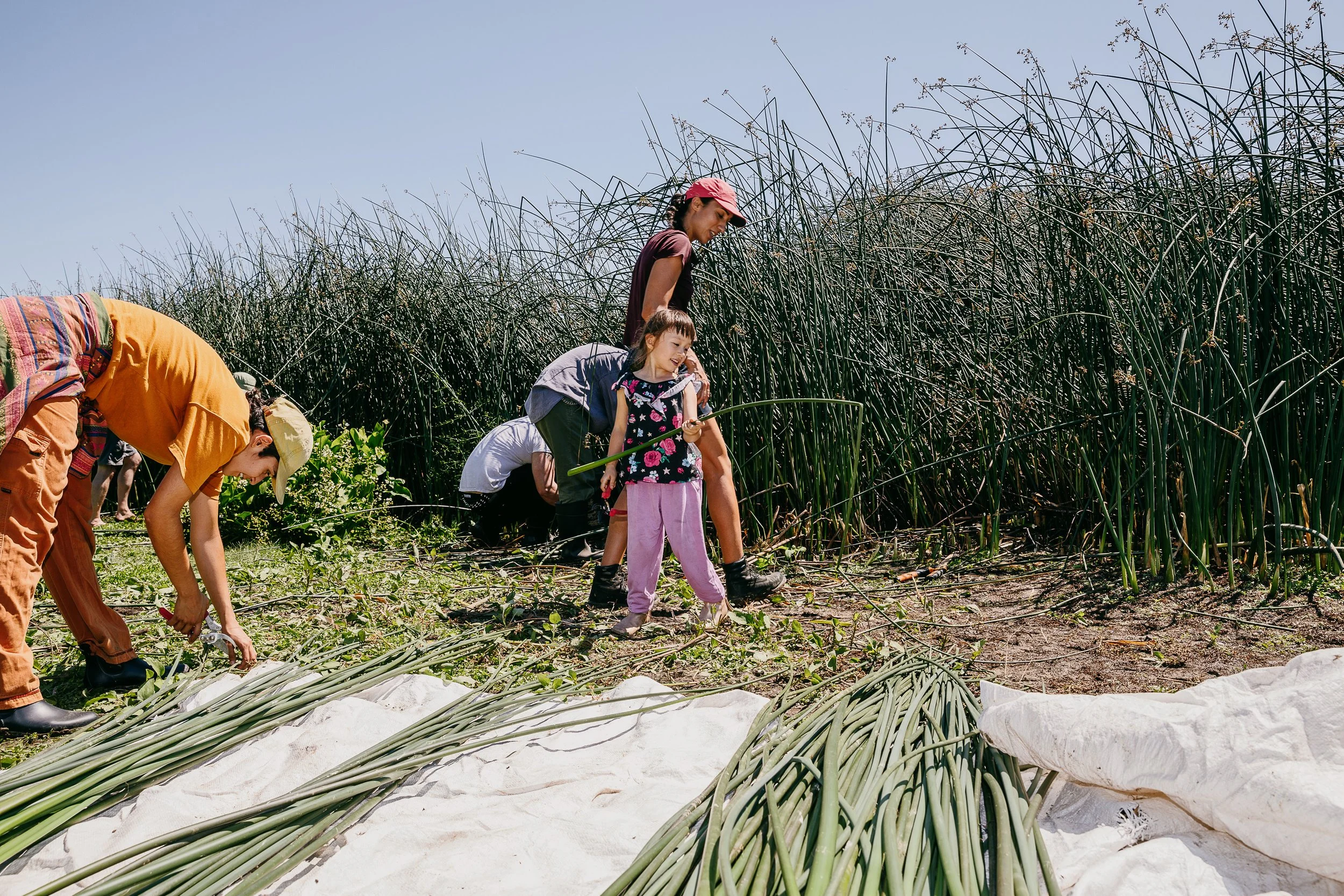The Spirit of Living with Mother Earth
Reawakening Indigenous Lifeways for Future Generations
“Learning the ancestral practice of canoe construction and cordage opened my heart even more to the necessity of community. We needed all our hands working together to bring the canoe to life. To move across the water in the canoe we all poured ourselves into brings tears to my eyes. I am so grateful.”
- Alliance for Felix Cove Indigenous Youth Kayaking Program Participant
It’s been well over two centuries since the waters of Tamal-liwa, now known as Tomales Bay, were dotted with tule canoes. Traditionally made by Támal-ko people to fish, travel, and trade, tule canoes largely disappeared as Indigenous families and communities were removed from ancestral homelands and wetlands filled to make pastures.
But last fall, a brand new tule canoe set out on Tamal-liwa–one made entirely by a group of young people learning the ancestral practices of the Támal-ko. As they took turns paddling across the quiet waters, Alliance founder Theresa Harlan recognized it as a moment of both healing and defiance.
“Learning the ways of our ancestors helps us to embrace ourselves as Indigenous people and greet each other as relatives,” she said. “We created the Indigenous Youth Kayaking Program so that young people could hear and connect with our ancestors’ stories–and making those stories visible once again is a way that we break free from the colonial systems designed to erase our existence.”
Over the last year, the Alliance has focused on creating programs and workshops specifically for children and youth to be able to connect with Támal-ko history and cultural practices. Through partnerships with Bay Area American Indian Two Spirits (BAAITS), LGBTQ Connection Napa-Sonoma and Blue Waters Kayaking, more than 12 young people have taken part in kayak trips and tule canoe workshops that brought Támal-ko ancestral practices to life.
Building A Tule Canoe, Building Community
During three fall Saturdays, both Indigenous and non-Indigenous youth and adults gathered with the Alliance’s team to harvest tule and build a handmade canoe–working in community to reestablish a sacred connection to Tamal-liwa.
On the first Saturday of tule canoe building, Latine/x youth and parents from Point Reyes spent the day sorting tule and making bundles. Teen girls listened to the plan and then organized the rest of the teens into work groups. Checking and following their progress. It was amazing to watch. The second weekend 40 youth, young adults and volunteers from Bay Area American Indian Two-Spirits (BAAITS) and LGBTQ Connection Napa-Sonoma and family members joined to complete the tule canoe from the bundles made in the last workshop. With more than 40 people working together, the team was able to complete building a canoe.
Native ecologist and ancestral skills keeper Redbird Willie guided the group’s process. “We are here to honor our ancestors, the master canoe makers, and also to learn to build community with each other,” said Redbird. “You will each find your role. For some of you, sorting the tule will call you and for others, you find yourself wanting to complete bundles. Every role is important. And we each have to do whatever role we are doing to the best of our ability. That is how we honor our ancestors.”
Making a canoe in the old ways is a slow and intentional process that begins with harvesting tule at the right time and in the right way. Tule is then dried and sorted into bundles by size and wholeness and integrity, as only tule that is not bent or broken can be used. Then the process of tying begins, traditionally with cordage made from plants or with natural fiber rope.
Working together, by the end of the second Saturday, the group had four solid bundles of tule ready to be connected for completing one canoe. Songs of blessings were offered by Indigenous relatives, Hadassah GreenSky and Ras K’Dee as the teens kept their focus on lashing the bundles together to form the canoe. The rest of us watched the bundles of tule transform into a canoe. Then joy and excitement became palpable as the canoe was placed on the water. For the rest of the afternoon, youth from the workshop took turns traveling across Tamal-liwa in the same way as Támal-ko ancestors since time immemorial.
Many participants reflected on how powerful the experience was from beginning to end–learning ancestral knowledge, creating a traditional canoe by hand, and then floating on the water.
“It was such a beautiful experience to learn from Redbird Willie and the duality of tule reed to create a canoe and be braided into cordage,” one participant shared. “The bundling of tule reed was probably the hardest part. My hands were red and pulsing afterwards. [But] I also got to paddle in the tule canoe we co-created–which was unbelievable.”
Most powerful, though, was the impact on young people–some of whom were reconnecting with their own Indigenous culture, and others who were learning about Indigenous history for the first time. As the group departed, there was a shared sense among all the participants that the experience would continue to shape their understanding of the land and water and their connections to it.
“[This experience was] life changing. To hear the history of the Tamál-Ko and Felix Cove. It's empowering to see and participate in the rematriation of the land. To have Indigenous representation in our local history is so very important and needed in our greater community,” a participant shared. “The youth walked away feeling more connected and seen. I'm grateful to have been invited to participate.”
Another shared that the experience was one they’ll never forget.
“Our Indigenous youth had an opportunity to come together to work, share joy, and be seen. It was the best event I’ve had the opportunity to attend.”


